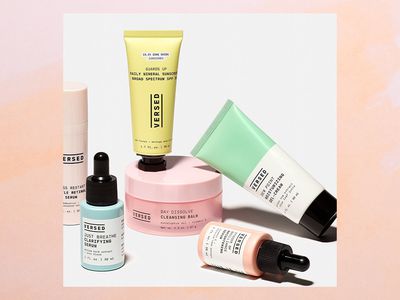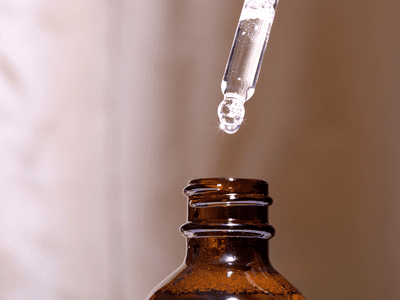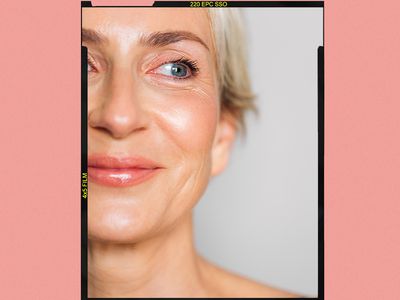
Aftercare and Healing Long-Term Care and Maintenance The Final Takeaway
Getting a tattoo is one of life’s big firsts, and it can make you feel excited and scared all at once. You’ve decided to get a piece of art placed on your body, one that will live there permanently. Whether you get your first tattoo the day you turn eighteen (hi!) or are just now dipping your toe into the inky waters after decades of adulthood, your first tattoo is pretty significant.
You’ll want to be prepared and well-researched in advance—from the design to the food in your stomach—when you get the work done. Ahead, with the help of board-certified dermatologist Elliot Love, DO, and tattoo artist Pierre Bustos, we’ll walk you through everything you need to know before you get your first tattoo.
Choosing a Tattoo
You know you want a tattoo, but maybe you aren’t sure what to get. How to decide? Bustos believes you can find inspiration anywhere. “Tattooing is an extreme representation of something you love… a true sign of commitment. This dedication can come from anywhere—music, art, sports—things someone loves, feels strongly about, and wants to honor.”
Be sure to research tattoo styles to help you narrow down the look. There are “old school” styles such as Sailor Jerry/Classic Americana, tribal, and Japanese; “new school” styles like dot work and watercolor; and combination styles such as neo-traditional and 3D.
Once you have a general idea of what you want for a tattoo, you'll want to work closely with an artist. What looks good on paper might not work on your skin, and it's important to have professional input about what will and won't work as a tattoo. Bustos suggests using other tattoos as a reference point, noting that "you can also look at places like Pinterest to find examples, and then speak with your artist about how to put your twist on it."
Finding a Tattoo Artist
The primary element in choosing an artist is ensuring they are reputable and hygienic. "I recommend looking at an artist's Instagram [and] online portfolio and making sure it's a good match for what you are looking to have done," suggests Love. And "of course, always ensure they [practice] in a clean and safe environment."
You’ll want to choose an artist who is happy to work with you and the design you want. “Artists can take your idea and translate it into the tattoo you are dreaming of,” explains Bustos. “They will help with placement, design, and style to make sure it looks the best it can.”
A pre-appointment consultation will help you get to know your artist and how they work and give you a sense of what your ink will look like. "When you meet with the artist for a consultation (or any communication beforehand), bring your idea and photo references for them to see," suggests Bustos. "By the time you [arrive] at the appointment, the artist will have your design ready. Any good artist will work with you to ensure the tattoo is everything you dreamed of and more."
Preparing for the Tattoo Appointment
The more ready you are for your appointment, the better the result will be. Here are some tips to help you prepare.
- Avoid supplements that increase bleeding: “Steer clear of anything containing ginkgo, garlic, ginseng, and vitamin E for two weeks, as all of these have the potential to increase bleeding,” suggests Love.
- Get good sleep the night before: “Although it is very unlikely one night of bad sleep will make a difference—except just being really tired and cranky—prolonged sleep deprivation (less than seven to eight hours) can, among other things, decrease your ability to fight infection which may increase the risk of the newly tattooed skin becoming infected,” explains Love.
- Don’t drink the night before or the day of: “Alcohol tends to decrease clotting time, which increases bleeding,” says Love. “Secondly, your perception and reaction to pain may be altered.”
- Don’t exercise immediately before or after: “The exact timeline for when you can resume intense physical activity will be dictated by your artist,” says Bustos.
- Eat a good meal beforehand: Eat “something that is not going to upset your stomach [before] having to sit for two or more hours,” recommends Love. Additionally, “if you are getting the tattoo in a highly vascularized area, such as the head or neck or backs of the hands and feet, you may want to consider increasing [your] intake of green leafy vegetables (spinach, kale, Brussels, etc.) leading up to your appointment,” he notes. “These vegetables are high in vitamin K, which can potentially help decrease bleeding.”
- Be hydrated: Make sure to drink enough water before, during, and after your tattoo.
What to Expect During the Tattooing Process
At your appointment, the artist will print your design and place it on you as a purple stencil. They'll shave the area first, if necessary. Once you agree on the size and placement of your piece, it's time to go.
Tattoos feel like what they are: vibrating needles being dragged through your skin. That means you’re likely to experience some pain. Breathe through it, and you should be fine. If you’re concerned, Love recommends applying a numbing cream in advance. “My favorite pain control product is Mad Rabbit’s Relieve Numbing Cream ($26),” he says. “I recommend applying it approximately 30-45 minutes [before] tattooing. My artist even uses it while he’s tattooing.”
Tattoo durations can be anywhere from a handful of minutes to many hours, and you can discuss the timeline in advance with your artist. Take breaks as needed, drink water (but don’t gulp it), and stand up occasionally.
Aftercare and Tattoo Healing
Once you have a fresh tattoo, you’ll want to care for it properly so it heals perfectly. Not washing, moisturizing, or protecting your tattoo from the sun can result not just in a poorly healed tattoo but can also lead to infection.
Most artists these days apply a “second skin” bandage to your tattoo. You’ll want to leave that on as long as possible, as it makes healing time shorter and reduces the likelihood of needing a touch-up. If it leaks, change it and apply a new one. “When directed by your artist, unwrap the bandage around your new tattoo,” says Bustos. “This usually happens after [around] three to five days.” Then wash it well; he recommends Hustle Bubbles by Hustle Butter ($20), a “gentle yet effective cleanser formulated to wash the area while nourishing.”
After removing the bandage, "ensure your hands are thoroughly washed… [and] apply the product directly to the impacted area," instructs Bustos. "Rinse with clean, warm—not hot—water and pat dry the area with a clean paper towel. Make sure to wash your hands after touching the fresh tattoo."
Once the bandage is off and your tattoo is clean, keep it moisturized. Bustos suggests applying “a pea-sized amount of Hustle Butter Deluxe Tattoo Balm ($22) over the entire tattooed area, and gently rub it into the skin. Apply two to three times per day or as recommended by your artist.”
You’re likely to experience some itching as the tattoo heals. For this, love recommends Mad Rabbit’s Soothing Gel ($23) “because it can be applied multiple times a day and absorbs quickly.” You’ll also want to keep your tattoo out of the sun for the duration.
Long-Term Tattoo Care and Maintenance
Your tattoo is now healed, but your work is not done. Tattoos require ongoing moisturization to stay vibrant. You’ll want to use a good quality moisturizer on your tattoo daily after bathing. Additionally, sunscreen needs to be your bestie. “UV rays from the sun denature the collagen in the superficial dermis where the tattoo pigment is deposited and maintained by immune cells (called macrophages),” says Love. “Repeated and excessive sun exposure will cause the loss of tattoo pigment and result in fading. Using a sunscreen with a SPF of 30-50 and applying every two hours during sun exposure will help prevent fading.”
The Final Takeaway
Your first tattoo is a big undertaking, but it can go super smoothly with these tips. Find an artist with a reputable portfolio and hygienic space, and work with them to craft a design you love. Before your appointment, rest up and eat well. Once you have your new tattoo, leave it bandaged for several days, then keep it clean, moisturized, and out of the sun. Long-term, use a high-SPF sunscreen and keep your tattoo well moisturized. After the first one heals up well, you're likely to want a second (and maybe even a third…and a fourth…).
See More from Byrdie Shopping

The Versed Skincare Products Team Byrdie Can't Live Without

How to Use Minoxidil—AKA Rogaine—for Hair Growth, According to Derms

Everything You Need to Know About Excel V Laser Treatments
